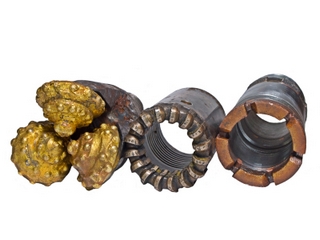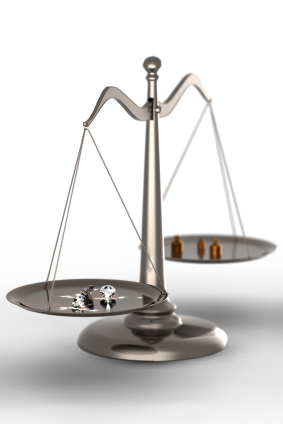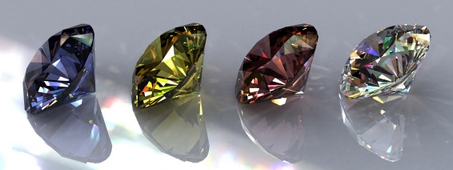|
The Grading System
The Grading System starts from mine to shop. The diamonds are divided by shape, size, quality and color. Even though, diamonds are graded by diamond centers in Antwerp, London, New York, Tel Aviv, Mumbai, and the Far East. The GIA in Carlsbad, California, grading system was revolutionized in 1955 with its Diamond Grading Report. The diamond is graded by the 4C's, cut, carat, clarity and color: The Cut gives the diamond its fire, sparkle and brilliance. The allure of a particular diamond depends on the cut more than anything else. Traditional 58 tiny facets in a diamond, precisely cut and sharply defined, may only be two millimeters in diameter. But the diamond would not be as beautiful, if it weren't for the precision cut. The cut of the diamond has three attributes: -brightness (the total light reflected from a diamond) -fire (the dispersion of light into the colors of the spectrum) -scintillation (the light flashes - or sparkle- when a diamond moves) Diamond cuts begin with the shape of a diamond, with the standard round brilliant dominating the majority of the diamond jewelry. Other shapes known as fancy shapes or fancy cuts are the marquise, pear, oval, and emerald cuts. New shapes that are gaining popularity these days are the hearts, cushions, triangles and other varieties.
The value of the cut refers to, the proportions, symmetry, and polish of a diamond. Major components from top to bottom are the crown, the girdle and the pavilion. A round brilliant cut diamond can have 57 or 58 facets. The 58th tiny flat facet at the bottom of the pavilion is the culet. The large flat facet at the top is the table. The proportions of a diamond is the relations between the table size, crown angle, and pavilion depth. Different range of proportion combinations can affect the diamond's synchronicity with light. Overall, the diamond cut grading system for the standard round brilliants in the D to Z color range from intensive research and tests, gives the diamond cut grade an Excellent to Poor rating. The Carat weight of the diamond is measured by metric carats. A diamond weighing 0.2 grams is divided into 100 points. This means that a diamond of 50 points is 0.50 carats. The price of the diamond with high points can get very expensive depending on the color, clarity, and cut.
The Clarity of the diamond is graded based on the internal inclusions and external blemishes that are found on them because they were created deep within the Earth. The fewer the inclusions and blemishes are the rarer the diamond. Most diamonds have marks on them. Their clarity grade ranges from flawless (FL) to diamonds with more prominent inclusions (I3). The Color of the diamond determines their value by their colorlessness - the less the color, the more value the diamond. A diamond color grading system uses letters to rate their value. The letters are: D, H, N, and Z. The letter D represents colorless, H is slightly colorless, N is a real light yellow color and Z represents more yellow color in the diamond. Colored diamonds are outside the range.
From Grading System To Fake Diamonds and Real Diamonds
|








